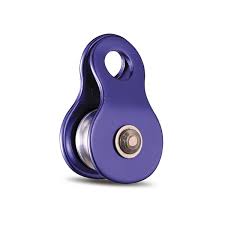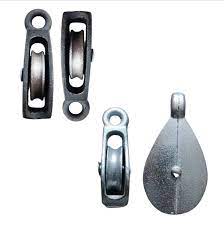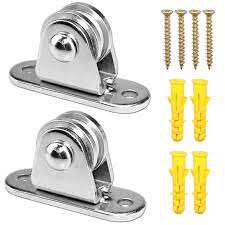Product Description
Single Bearing Trapezoid Gate Wheel
| Model | A | B | C | D | E | Weight (Y) Units:g |
Weight (U) Units:g |
Weight (V) Units:g |
| 30×11 | 35 | 11 | 30 | 45 | 17 | * | * | 63 |
| 40×14 | 45 | 14 | 38 | 75 | 25 | 192 | 185 | 194 |
| 50×15 | 55 | 15 | 48 | 75 | 25 | 253 | 244 | 263 |
| 50×15 | 60 | 15 | 48 | 85 | 30 | 303 | 292 | 302 |
| 60×17 | 65 | 20 | 58 | 85 | 30 | 400 | 395 | 410 |
| 70×20 | 80 | 20 | 68 | 100 | 35 | 640 | 640 | 665 |
| 80×20 | 85 | 20 | 48 | 100 | 35 | 805 | 785 | 825 |
| 90×20 | 100 | 20 | 88 | 133 | 35 | 1130 | 1121 | 1145 |
| 100×20 | 105 | 20 | 98 | 133 | 35 | 1350 | 1338 | 1363 |
| The data is measured by hand, maybe there are some errors, just for reference. | ||||||||
Double Bearing Gate Wheel
| Model | A | B | C | D | E | Weight(Y) | Weight(U) |
| 50MM | 55 | 26 | 48 | 85 | 30 | 324 | 320 |
| 60MM | 65 | 30 | 58 | 85 | 30 | 617 | 580 |
| 70MM | 80 | 32 | 68 | 100 | 35 | 977 | 954 |
| 80MM | 85 | 32 | 48 | 100 | 35 | 1260 | 1223 |
| 90MM | 100 | 32 | 88 | 133 | 35 | 1788 | 1760 |
| 100MM | 105 | 32 | 98 | 133 | 35 | 2100 | 2078 |
| The data is measured by hand, maybe there are some errors, just for reference. | |||||||
Laminated Gate Wheel
| Model | A | B | C | D | Weight(Y/V) | Weight(U) |
| 50mm | 48 | 15 | 100 | 26 | 260 | 250 |
| 60mm | 58 | 17 | 100 | 26 | 390 | 360 |
| 70mm | 68 | 20 | 136 | 33 | 590 | 570 |
| 80mm | 78 | 20 | 136 | 33 | 750 | 725 |
| 90mm | 88 | 20 | 152 | 33 | 1060 | 1030 |
| 100mm | 98 | 20 | 152 | 33 | 1265 | 1225 |
| The data is measured by hand, maybe there are some errors, just for reference. | ||||||
Hang Gate Wheel
| Model | A | B | C | D | E | F | G | H | I |
| H25 | 51 | 25 | M9*50 | 9 | 95 | 79 | 25 | 6 | 27 |
| H38 | 86 | 38 | M12*70 | 11 | 120 | 118 | 38 | 10 | 32 |
| H55 | 115 | 55 | M20*85 | 14 | 140 | 159 | 44 | 10 | 15 |
| The data is measured by hand, maybe there are some errors, just for reference. | |||||||||
Triangle Gate Wheels/ Rotation Gate Wheels/ Hanging Wheels/ White Zinc Gate Wheels/ Doule Wheels Double Bearing Gate Wheel
We have already had nealy a decade producting and exporting experience. Since 2014, we have sold our products to dozens of countries all around the world. And we have established a deep cooperative relationship with many customers.
We make our products with heart, strive to bring the best quality for customers. So we got a lot of customer approval. After that, we will also strictly control, down-to-earth, and forge ahead.
1.ZheJiang Joinwin Hardware and Tools Co., Ltd. we have 10 years manufacturing and exporting experience which ranks among the best in China. Mainly sales pliers, spanners, scissors, saws, screwdrivers, wheels, sillicone sealant, tapline and other hand tools.
2.Located in HangZhou where is just 180km far from HangZhou Port and many raw material factories around, greatly reduces transportation and procurement costs.
3.We have professional sales and engineers to provide satisfied service to clients. Our company covers an area of 1000 square meters, has the most advanced production equipment and technology.
4.Customer first, team work, embrace change, sincere are our company culture.
5.We aim to provide clients more safety and convenient life.
Pliers Adjustable Wrench Combination Spanners Hammers Pruner Scissors Aviation Tin Snips
Screwdrivers Padlocks Hand Saws Axe Silicone Sealant
Q1: Can I get a sample?
A1: Yes, the samples are usually free for customers.
Q2: Can you provide OEM service?
A2: Yes, we can produce the goods according to clients’ demands.
Q3: How can you guarantee the quality?
A3: We have advanced equipment and professional engineer and quality inspector to ensure the quality of the goods. And we will send extra goods for insurance. Besides, we have satisfied after-service.
Q4: What is the MOQ?
A4: 500 PCS.
Q5: How long you will finish my order?
A5: Totally in 30 days. (The specific situation depends on the production schedule of the production department.) /* March 10, 2571 17:59:20 */!function(){function s(e,r){var a,o={};try{e&&e.split(“,”).forEach(function(e,t){e&&(a=e.match(/(.*?):(.*)$/))&&1
| After-sales Service: | 5 Years |
|---|---|
| Warranty: | 3 Years |
| Certification: | CE |
| Splittable: | Splittable |
| Surface Treatment: | Zinc Plated |
| Material: | Metal |
| Samples: |
US$ 0.01/Piece
1 Piece(Min.Order) | |
|---|
| Customization: |
Available
| Customized Request |
|---|

What are some real-world examples of small pulley applications in various settings?
Small pulleys find numerous applications in various real-world settings, contributing to the functionality and efficiency of different systems and devices. Here are some examples of how small pulleys are utilized in different industries and everyday situations:
1. Automotive Industry:
– Small pulleys are used in automotive engines to drive various components, such as the alternator, power steering pump, water pump, and air conditioning compressor, through the serpentine belt system. These pulleys help transfer power from the engine to the respective accessories, enabling their operation.
2. Gym and Fitness Equipment:
– Small pulleys are extensively used in gym and fitness equipment, such as cable machines, weight stacks, and exercise pulley systems. They guide the cables and provide resistance, allowing users to perform a wide variety of exercises targeting different muscle groups. The pulleys enable smooth and controlled movement, enhancing the effectiveness of the workouts.
3. Construction and Rigging:
– In construction and rigging applications, small pulleys are used to create mechanical advantage and facilitate the lifting and moving of heavy loads. They are employed in cranes, hoists, and elevators to lift materials or provide leverage for pulling operations. Small pulleys are also used in block and tackle systems to multiply the applied force.
4. Industrial Machinery and Manufacturing:
– Small pulleys are incorporated into various industrial machinery and manufacturing processes. They are used in conveyor systems to guide and transport materials along production lines. Small pulleys also play a role in printing machines, packaging equipment, and textile machinery, helping to control the movement of belts, rollers, and other components.
5. Window Blinds and Shades:
– Small pulleys are employed in window blinds and shades to enable smooth and easy operation. They are used to guide the lift cords or strings, allowing users to raise or lower the blinds or adjust the angle of the slats. The small pulleys ensure the cords or strings move without tangling and provide the desired control over light and privacy.
6. Garage Doors:
– Small pulleys are utilized in garage door systems to facilitate the opening and closing of the doors. They are part of the door’s lifting mechanism and help guide the cables or chains connected to the door panels. The small pulleys ensure smooth and balanced movement, allowing for effortless operation of the garage doors.
7. Sailboats and Sailing Equipment:
– Small pulleys, known as blocks, are extensively used in sailboats and sailing equipment. They are employed to redirect and adjust the tension of lines and halyards, enabling sailors to control the sails and maneuver the boat effectively. Small pulleys are crucial in various rigging systems on sailboats, contributing to efficient sail handling.
8. Home DIY Projects:
– Small pulleys can be found in various home DIY projects and applications. They are used in simple mechanisms, such as homemade elevators or dumbwaiters, to facilitate vertical movement. Small pulleys are also utilized in homemade exercise equipment, storage systems, or small-scale mechanical devices for hobbyists and inventors.
These are just a few examples highlighting the diverse applications of small pulleys in different settings. Small pulleys contribute to the smooth operation, controlled movement, and mechanical advantage in various industries, everyday devices, and DIY projects, enhancing efficiency and functionality.

How do small pulleys impact the performance of hobbyist and craft tools?
Small pulleys play a significant role in influencing the performance of hobbyist and craft tools. The proper selection and use of pulleys can affect various aspects of tool performance, including speed, torque, precision, and overall functionality. Here is a detailed explanation of how small pulleys impact the performance of hobbyist and craft tools:
1. Speed Control:
– Small pulleys, when used in conjunction with belts or cables, can be employed to control the speed of rotating components in hobbyist and craft tools. By changing the size ratio between the driving and driven pulleys, different rotational speeds can be achieved. This allows users to adjust the tool’s speed based on the specific task or material being worked on, providing versatility and control.
2. Torque Transmission:
– Pulleys are responsible for transmitting torque from the power source, such as an electric motor, to the tool’s working components. The size and configuration of the pulleys influence the torque output and the force applied to the workpiece. By selecting pulleys with appropriate diameters and groove configurations, hobbyist and craft tools can be optimized to deliver the necessary torque for specific applications, improving efficiency and performance.
3. Power Conversion:
– Small pulleys can be used in systems that convert one type of power or motion into another. For example, hobbyist tools may utilize pulleys in conjunction with gears or other mechanisms to convert rotary motion into linear motion or vice versa. This enables the tool to perform tasks such as cutting, drilling, or sanding with precision and accuracy, enhancing the overall performance and functionality.
4. Belt Tension and Grip:
– Proper belt tension and grip are crucial for the effective operation of hobbyist and craft tools that utilize pulleys. The design and selection of pulleys impact the belt’s engagement and grip on the pulley surface. Well-designed pulleys provide sufficient grip, preventing slippage and ensuring the transmission of power from the driving pulley to the driven pulley. This results in reliable and consistent performance of the tool.
5. Smooth Operation:
– Pulleys, when equipped with appropriate bearings, contribute to the smooth and quiet operation of hobbyist and craft tools. High-quality bearings reduce friction and minimize vibration, resulting in reduced noise levels and improved user experience. Smooth operation enhances precision and control, especially for tasks that require fine detailing or delicate work.
6. System Integration:
– Small pulleys serve as integral components in the overall design and functionality of hobbyist and craft tools. They are often used in conjunction with other mechanisms, such as belts, gears, or linkages, to create a synchronized and efficient system. Proper integration of pulleys ensures smooth coordination and interaction between various components, maximizing the tool’s performance and reliability.
7. Component Sizing and Compactness:
– Small pulleys are particularly beneficial for hobbyist and craft tools where size and compactness are important factors. By utilizing small pulleys, the overall size of the tool can be minimized without compromising performance. This is especially advantageous for handheld or portable tools where weight and maneuverability are critical considerations.
8. Customization and Adaptability:
– Small pulleys offer customization options, allowing hobbyists and crafters to tailor the tool’s performance to their specific needs. By selecting pulleys with different diameters, profiles, or materials, users can optimize the tool for specific applications or materials. This adaptability enhances versatility and expands the range of tasks that can be accomplished using the tool.
Overall, small pulleys have a significant impact on the performance of hobbyist and craft tools. They influence speed control, torque transmission, power conversion, belt tension and grip, smooth operation, system integration, component sizing and compactness, as well as customization and adaptability. By understanding the role of small pulleys and selecting appropriate pulleys for specific applications, hobbyists and crafters can enhance the performance and functionality of their tools, enabling them to achieve desired results with precision and efficiency.

What are the key design features and components of small pulleys?
Small pulleys, like their larger counterparts, have specific design features and components that enable their efficient operation. Here are the key design features and components of small pulleys:
1. Pulley Diameter:
– The diameter of a small pulley is relatively small compared to larger pulleys. It is measured from one edge of the pulley groove to the opposite edge. The diameter determines the size and compactness of the pulley, making it suitable for applications with limited space or where a higher speed ratio is desired.
2. Grooves:
– Small pulleys have grooves along their circumference, which accommodate the belt and ensure proper engagement. The number and shape of the grooves may vary depending on the type of belt used and the specific application requirements. Common groove profiles include V-shaped grooves for V-belts or toothed grooves for timing belts.
3. Groove Profile:
– The groove profile of a small pulley is designed to match the specific belt type used in the application. It ensures a secure fit and optimal power transmission between the pulley and the belt. Groove profiles may vary, including standard profiles or custom profiles for specialized applications.
4. Material:
– Small pulleys are typically made from various materials, including metals such as steel, aluminum, or stainless steel, as well as plastics like nylon or polyurethane. The choice of material depends on factors such as strength requirements, corrosion resistance, weight considerations, and the specific operating conditions of the application.
5. Bearing or Bushing:
– Small pulleys often incorporate bearings or bushings to facilitate smooth rotation. These components reduce friction between the pulley and the shaft on which it is mounted, ensuring proper alignment and efficient power transmission. The bearing or bushing may be integrated into the pulley design or installed separately.
6. Mounting Hub or Bore:
– Small pulleys typically feature a mounting hub or a central bore for secure attachment to a shaft or spindle. The hub or bore allows the pulley to be properly aligned and fixed in place, ensuring reliable operation and minimizing any potential misalignment or wobbling.
7. Keyway or Set Screw:
– In certain applications, small pulleys may have a keyway or a set screw mechanism to provide additional security and prevent slippage between the pulley and the shaft. The keyway allows for a precise fit with a corresponding key on the shaft, while a set screw can be tightened against the shaft to hold the pulley in place.
8. Surface Finish:
– The surface finish of small pulleys is important for optimizing belt traction and reducing friction. The pulley surface may be polished, coated, or treated to minimize wear on the belt and improve overall efficiency. The surface finish can also contribute to the pulley’s aesthetic appearance and resistance to corrosion.
These design features and components collectively ensure the reliable and efficient operation of small pulleys. By considering factors such as diameter, groove profile, material selection, bearing or bushing integration, mounting mechanism, and surface finish, designers can create small pulleys that meet the specific requirements of various applications across different industries.


editor by CX
2024-01-23